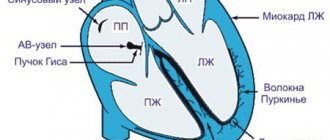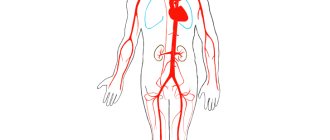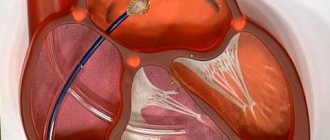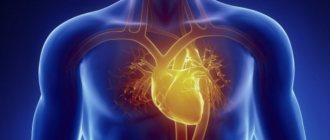Where is euthanasia legalized?
Currently, euthanasia is officially permitted in the following states:
- Netherlands. The law was adopted in 2002. At the same time, a list of conditions was approved that are a significant justification for making this decision. Moreover, each case of euthanasia is reviewed by a special “ethics committee”, which approves or rejects the procedure.
- Belgium. The country also adopted a law in 2002, following the Netherlands. Its provisions apply only to citizens of the state permanently residing in Belgium. The basis for euthanasia is unbearable physical suffering that cannot be alleviated by existing medications.
- Switzerland. In this country, the procedure is allowed to be carried out not only by citizens, but also by foreigners who have expressed their will to die. Special clinics have been created in the state to carry out euthanasia.
- USA. The procedure is not legalized throughout the country. Oregon was the first state to allow euthanasia. Then Washington followed suit, and then Montana. Several years ago, “artificial death” was allowed in seven more states, including California, Hawaii, New Jersey and some others.
- Canada. By law, euthanasia can be carried out only by citizens of the state who have reached the age of majority. The procedure is not performed for foreigners. Most of the country's population actively supports allowing euthanasia, which can help sick people stop suffering and die peacefully. Canadians believe that death must be “justified and foreseeable.”
- Mexico. In this country, euthanasia was allowed in 2021. Then the “Law on Death with Dignity” was adopted and conditions were approved in which the procedure would be justified.
In 2021, New Zealand held a referendum and vote to legalize euthanasia. The initiative was supported by more than 60% of the country's residents. The law is currently under development and will come into force very soon.
Is it painful to die or not - feelings at the moment of death
Every person at a conscious age thinks about death. What awaits us after death? Does the other world exist? Are we purely biological beings, or does each of us still have a certain soul that, after death, goes to another world? One of the many questions that arises in the mind is the unknown of the sensations that a person experiences just before death. Does a person experience torment, pain, or, on the contrary, do all sensations become dull before leaving for another world? The issues discussed have worried people since their inception and still do. Scientists continue to study this mysterious phenomenon, but only a few questions can be answered. Feelings of Dying People The physical sensations of a dying person will depend primarily on what led him to death. He can experience both severe pain and pleasant sensations. As for psychological perception, at the moment of dying, most people instinctively feel fear, panic and horror, and try to “resist” death. According to biology, after the heart muscle stops contracting and the heart stops, the brain continues to function for about five minutes. It is believed that in these last minutes, a person’s mind reflects on his life, vivid memories emerge, and the person, as it were, “sums up” his existence. Classification of death Biologists divide death into two categories: Natural; Unnatural. Natural death occurs according to the laws of normal physiology and occurs due to the natural aging of the body or in the case of underdevelopment of the fetus in the womb. Unnatural death can occur for the following reasons: Due to various serious and fatal diseases (oncological, cardiovascular, etc.); Mechanical effects: suffocation, electric shock; Chemical exposure: overdose of drugs, medicinal substances or alcohol overdose; Unspecified - a seemingly healthy person dies suddenly from a latent disease or a sudden, acute form of the disease. From a legal point of view, death is divided into: Non-violent; Violent. Nonviolent death occurs in old age, long-term illness, and in other similar cases. Violent deaths include murder and suicide. Stages of Death To better understand what a person may experience during death, we can consider the stages of the process identified from a medical point of view: Preagonal stage. At this moment, a malfunction occurs in the blood circulation and breathing systems, causing hypoxia to develop in the tissues. This period lasts from several hours to several days; Terminal pause. At this moment, the person stops breathing, the functioning of the myocardium malfunctions; Agonal stage. The body is trying to return to life. At this stage, a person periodically stops breathing, the heart works increasingly weaker, which causes malfunctions in the functioning of all organ systems; Clinical death. Breathing and blood circulation stop. This stage lasts about five minutes, and it is at this moment that the person can be brought back to life with the help of resuscitation measures; Biological death - a person finally dies. Important! Only people who have experienced clinical death are the only ones who can accurately report what sensations are possible in a dying person. Morbidity in various deaths Cause Time of dying Pain Overdose of prescription drugs 129 minutes 8.5 Fall from height 5 minutes 17.78 Drowning 18 minutes 79 Shot in the head with a pistol 3 minutes 13 Fire 1 hour 91 Is it painful to die from cancer Cancer is one of the the most common causes of death. Unfortunately, a cure for malignant carcinoma has not yet been discovered, and cancer at stages 3 and 4 is an incurable disease. All that doctors can do in this situation is to reduce the patient’s pain with the help of special analgesics and slightly prolong the person’s life. A person with a cancer tumor does not always experience pain when dying. In some situations, before the death of a cancer patient, he begins to sleep a lot and ultimately plunges into a comatose state, after which he dies without feeling any physical illness, that is, directly in his sleep. In another situation, the stages of dying of a cancer patient are as follows: Before death, the patient may experience migraines, see hallucinations and lose memory, which is why he does not recognize his loved ones; Speech disturbances occur, it is more difficult for the patient to say connected sentences, he may utter awkward phrases; The person may experience blindness and/or deafness; As a result, the motor functions of the body are impaired. However, this is only a general average picture of how a person with cancer feels before death. If we look directly at specific types of cancer tumors, then the localization of carcinoma in the liver makes a person die in agony due to multiple bleedings. Death from lung cancer also causes significant pain due to the fact that the patient begins to choke, vomit blood, after which an epileptic attack occurs and the patient dies. In the case of intestinal cancer, the patient also feels excruciating pain in the abdomen, in addition to this, he is tormented by a headache. Laryngeal cancer patients also feel pain before they die. With this localization, the person also experiences severe pain in the corresponding area. Important! Do not forget that the described symptoms are eliminated by doctors with the help of special analgesics, and before death - narcotic drugs, so in some cases it is possible to achieve an almost complete reduction in pain until it disappears. Thus, the question “is it painful to die from cancer” can most likely be answered in the negative, since modern medicine has all the means to help reduce the patient’s pain. Is it painful to die of old age? According to medical research, people in old age experience a feeling of relief when they die. Only 1/10 of those surveyed feel fear before death. Just before death, old people feel discomfort, pain and complete apathy towards everything. When dying, people begin to see hallucinations and can “talk” to the dead. As for physical sensations, dying is painful only due to difficulty breathing. Most old people can die in their sleep, and this death is not associated with severe pain and physical suffering. Does it hurt to die from a pill overdose? The physical sensations of a person dying due to taking an excessive amount of a drug depend primarily on the type of medication and the individual characteristics of the body. In fact, death occurs due to the development of severe intoxication of the body, and before death a person may experience pain due to pain in the abdomen. In addition, he experiences dizziness, nausea and vomiting. An exceptional case would be a person who has taken an excessive dose of a potent sedative, since the consequences of such an act will be the onset of a deep coma and the shutdown of all instinctive defense mechanisms. In view of this, a person passes into another world directly in a dream and does not feel pain. Is it painful to die from a stroke? Because a stroke can occur in different areas of the brain, a person's experience of death may vary. If the motor center has been affected, weakness or paralysis may occur in a particular limb. The general picture of a person’s feelings about death is usually the following: He hears incomprehensible voices or sounds; Sleepy; Confused mind; Strong headache; General weakness. Some stroke patients may also die in their sleep or go into a deep coma. Is it painful to die from a heart attack? During a heart attack, sudden changes in pressure occur due to a failure in blood circulation, which is felt by a person as severe pain in the area behind the sternum. In addition, the blood supply to all organs is disrupted, which also causes pain - in particular, blood stagnates in the lungs and swelling of the latter occurs. The patient experiences difficulty breathing and general weakness of the body. In the first minutes, when blood stops flowing to the brain and hypoxia begins, the person will also experience a severe headache. However, as a rule, during such an attack, a person may lose consciousness almost immediately, since the organs are not supplied with blood in the normal manner. Without medical assistance, a person in this condition can live no more than 5 minutes without feeling pain. Does it hurt to die from a bullet? It all depends primarily on the place where the bullet hit and its caliber. If a bullet pierces the brain, then very often death occurs almost instantly, and the organ shuts down faster than the person has time to feel anything. In other situations, as a rule, first a person feels a sharp jolt, then a certain warmth in the body, and only then severe pain. After a few minutes, a painful shock occurs, when pain is no longer felt due to the body’s defense mechanisms being turned on, and the person loses consciousness. If medical care is not provided, he dies from blood loss, but there is no physical suffering. Does it hurt to die from a fall? Death from falling from a great height occurs almost instantly - within a few seconds or minutes. The sensations largely depend on the position in which the person landed and on the surface on which he fell. If you land on your head, death occurs instantly, and the only thing that can be experienced in this case is psychological panic during the flight. Death due to a fall occurs due to multiple fractures, rupture of internal organs and large blood loss. In the first seconds after the fall, a person experiences severe pain from the impact, then weakness occurs due to developing hypoxia and loss of consciousness. Is it painful to die from blood loss? The time of death in this case depends on the caliber of the damaged vessels. In particular, if the walls of the aorta are destroyed, the person dies almost instantly, without experiencing pain. Losing a lot of blood, a person does not feel pain. When bleeding, he first experiences dizziness, heaviness in the body and weakness. Gradually, strong thirst is added to these feelings. Eventually, due to insufficient blood supply, the person may lose consciousness and die. Is it painful to die from cold? In severe frost conditions, a person can die for quite a long time, but will not experience pain. Being in the cold for a long time, a person first experiences severe trembling and body aches. Gradually, he also begins to lose his memory and the ability to recognize the faces of loved ones. Then severe weakness sets in and, as a rule, people simply fall into the snow. The slow speed of blood flow in the brain provokes hallucinations. Severely narrowed capillaries on the skin can suddenly expand their lumen to create a surge of heat, which is why people often try to take off their clothes at this moment due to the feeling of “hotness”. After this, the person loses consciousness and dies as if “in his sleep.” Is it painful to die from AIDS? Since death in this case does not arise from AIDS itself, but from a disease that the body cannot cope with, the sensations before death may vary. Most often this is cytomegalovirus, liver cirrhosis, tuberculosis, developing against the background of AIDS. However, death can also occur from ordinary bronchitis. Physical sensations will depend entirely on the disease that the body cannot overcome. It is painful for a person to die only if he is sick with serious diseases of the internal organs. For example, if death occurs from tuberculosis, the patient will experience severe pain in the chest, breathing and heartbeat may be impaired, and bloody vomiting may occur. In cases where death occurs due to cirrhosis of the liver, the patient may experience excruciating pain in the abdomen and right hypochondrium. Conclusion Summarizing the above, we can say that it is more painful for people to die psychologically. Only in some cases does a person experience severe pain before death. Most often, people find it difficult to accept the fact of dying.
How the procedure works
In order for euthanasia to be approved, it is necessary to write an application, perhaps even more than one. This is done in order to confirm the patient’s sincere desire to take such a serious step. A special commission, which must include doctors, psychologists and lawyers, considers the indications for the procedure, studies the patient’s medical history and makes a final decision.
The commission members also evaluate the patient’s ability to make independent, informed decisions. The attending physician must make sure that the pathology is indeed incurable and there are no methods that can alleviate the patient’s condition.
If the patient does not change his decision during the inspection, and the commission finds compelling reasons to approve euthanasia, the preparation of documentation and the selection of medications begins. The procedure can only be performed by a doctor.
First, the patient is administered strong narcotic analgesics, and then drugs intended directly for euthanasia. They are made on the basis of barbiturate. The medication is administered into the patient's body parenterally.
How to detect a heart attack
Causes
Chest pain does not always indicate the development of a heart attack; it often occurs with arrhythmia, a sharp increase in blood pressure, and in patients with coronary artery disease. The cause of the attack is associated with insufficient oxygen supply, decreased blood supply to the myocardium, or thrombosis of a large vessel. Atherosclerosis is often a predisposing factor to its development. In older people, cardiac dysfunction is associated with age-related dysfunction of the cardiovascular system.
Provoke the development of an attack:
- diabetes;
- taking non-steroidal drugs for a long time;
- increased body weight and metabolic disorders;
- smoking, alcohol abuse.
Each condition is characterized by its own symptoms and manifestations.
How does a heart attack manifest?
A myocardial attack occurs suddenly or develops gradually. It is characterized by symptoms:
- pain in the heart area, in the center of the chest or in the left half. The pain has varying degrees of severity, can increase in intensity, and last more than 10-20 minutes. Feels like a feeling of fullness, burning, compression;
- feeling of discomfort in the jaw, face, neck, shoulder on the left;
- shortness of breath, difficulty breathing, inability to take a deep breath.
In addition to the characteristic signs, symptoms such as headache, dizziness, chills, sweating on the face, nausea or vomiting are also observed.
Symptoms have some differences by gender and sometimes take atypical forms. In men, a few hours before the development of the pathological condition, heartburn, belching, and nausea may appear. With such symptoms, cardiac dysfunction is often regarded as food poisoning or an exacerbation of gastrointestinal diseases. An attack can also manifest itself as wheezing, coughing, or increasing respiratory failure.
In women, neurological symptoms are more common. Coronary syndrome is masked by constant fatigue, increasing weakness, and sleep disturbances. Blurred vision, unsteadiness when walking, tingling in the arms and legs appear.
In some cases, patients do not notice a deterioration in their health and they have no symptoms of an approaching dangerous condition. The absence of any signs indicates the development of an atypical painless form. In this case, you should be alert to unmotivated weakness and causeless fatigue that appear after physical or emotional stress.
Often cardiac disorders are accompanied by panic attacks. And in these cases, it is extremely important to be able to distinguish a panic attack as a symptom of an attack from a condition caused by stress, VSD or mental disorders.
What is a panic attack and its main symptoms
Panic attack is a neurotic disorder characterized by the appearance of sudden anxiety and fear in combination with somatic symptoms. The unpleasant state lasts from several minutes to several hours, but on average – up to half an hour. It is more often observed in young women under 30 years of age. Its symptoms are similar to those of a heart attack.
A panic attack causes:
- chest pain;
- difficulty breathing;
- dizziness;
- severe weakness;
- nausea and/or vomiting.
How to distinguish a panic attack from a heart attack with the same symptoms? It is recommended to take into account the circumstances under which the unpleasant sensations appeared. If against the background of stress, most likely it is a panic attack; after physical exertion, it is a dysfunction of the cardiovascular system. There are some differences in the nature of pain. During a panic attack, the pain in the chest is sharp and “prickly”, localized in the center.
Breathing exercises help to cope with this condition. But, if there is no improvement within a few minutes, in order not to miss a heart attack, you need to call an ambulance.
Chest pain does not always indicate a heart attack. Unpleasant sensations are caused by a variety of diseases, including those that are not life-threatening. But if characteristic symptoms occur, you should immediately seek help to minimize the risk of cardiac complications, and often save lives.
Sources
“Heart Attack Symptoms, Risk, and Recovery,” US Centers for Disease Control and Prevention https://www.cdc.gov/heartdisease/heart_attack.htm
"Heart Attack", UK National Health Service https://www.nhs.uk/conditions/heart-attack/
"Warning Signs of a Heart Attack". American Heart Association https://www.heart.org/en/health-topics/heart-attack/warning-signs-of-a-heart-attack









